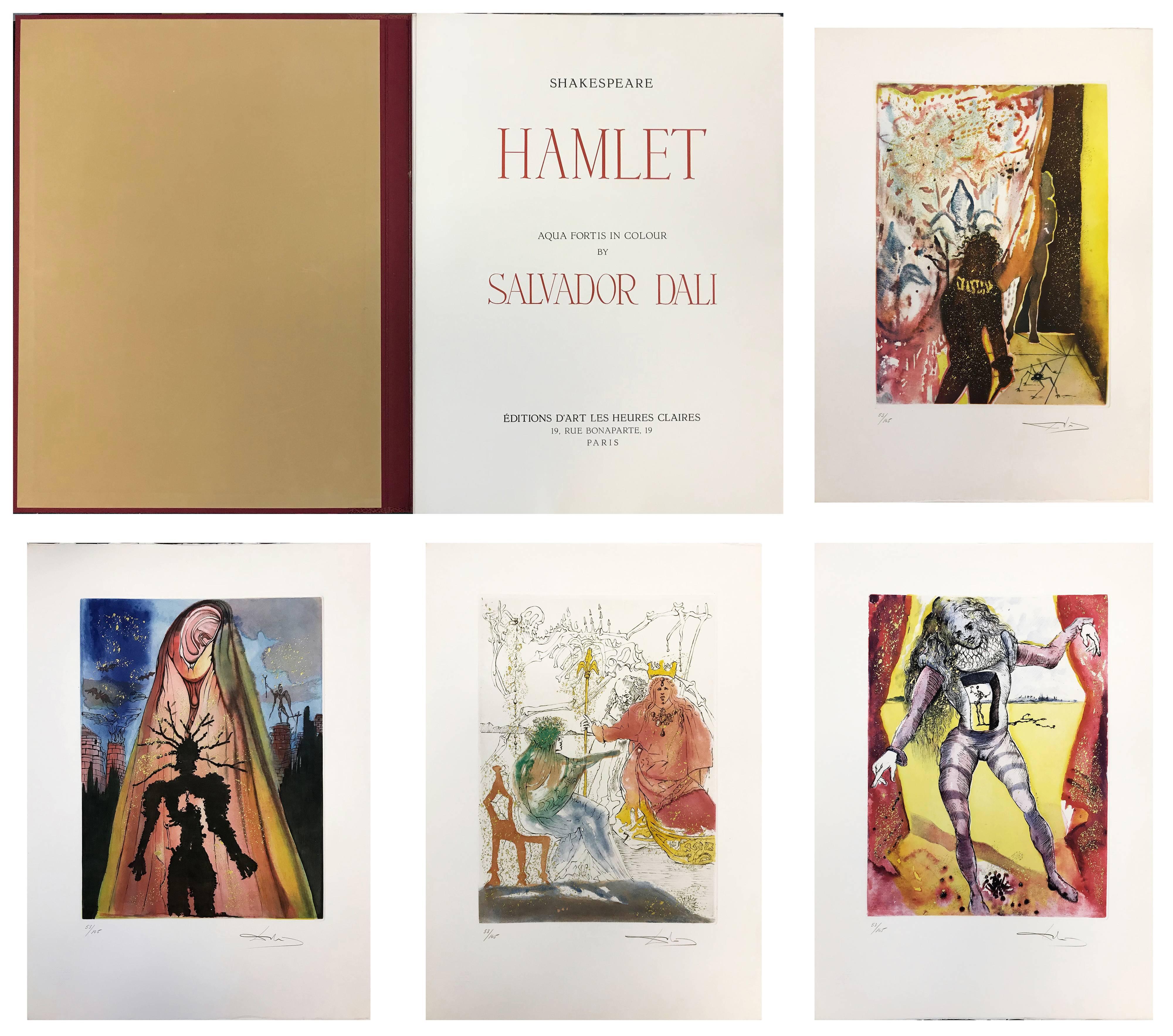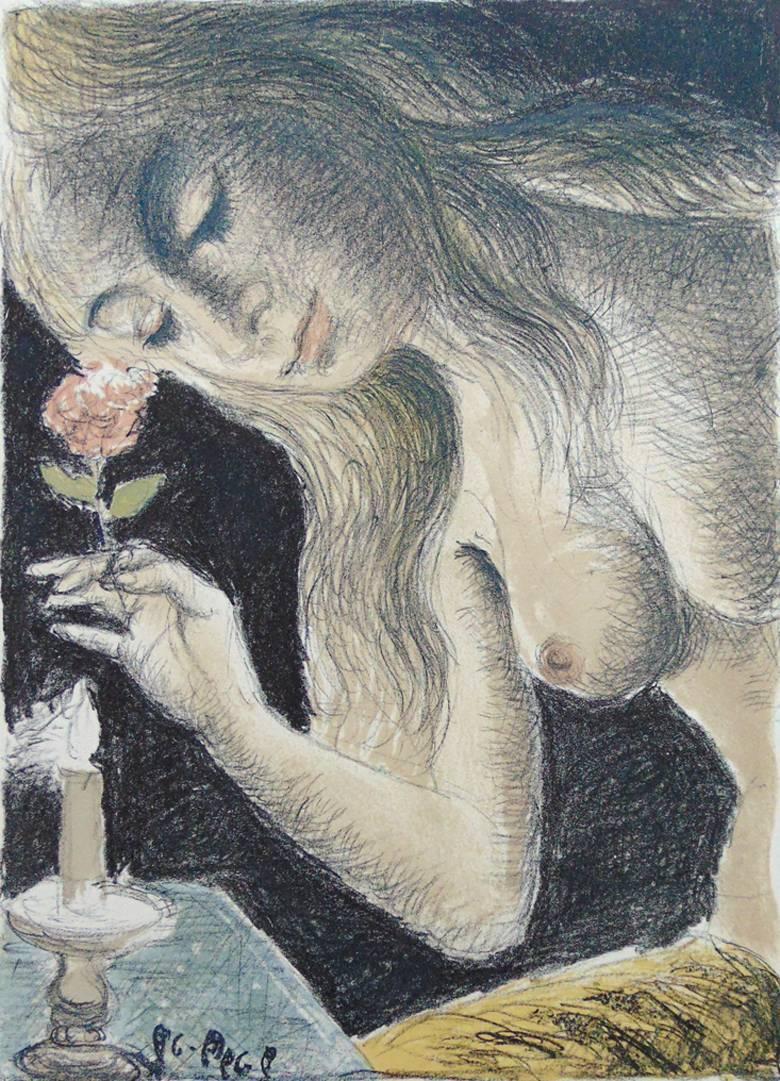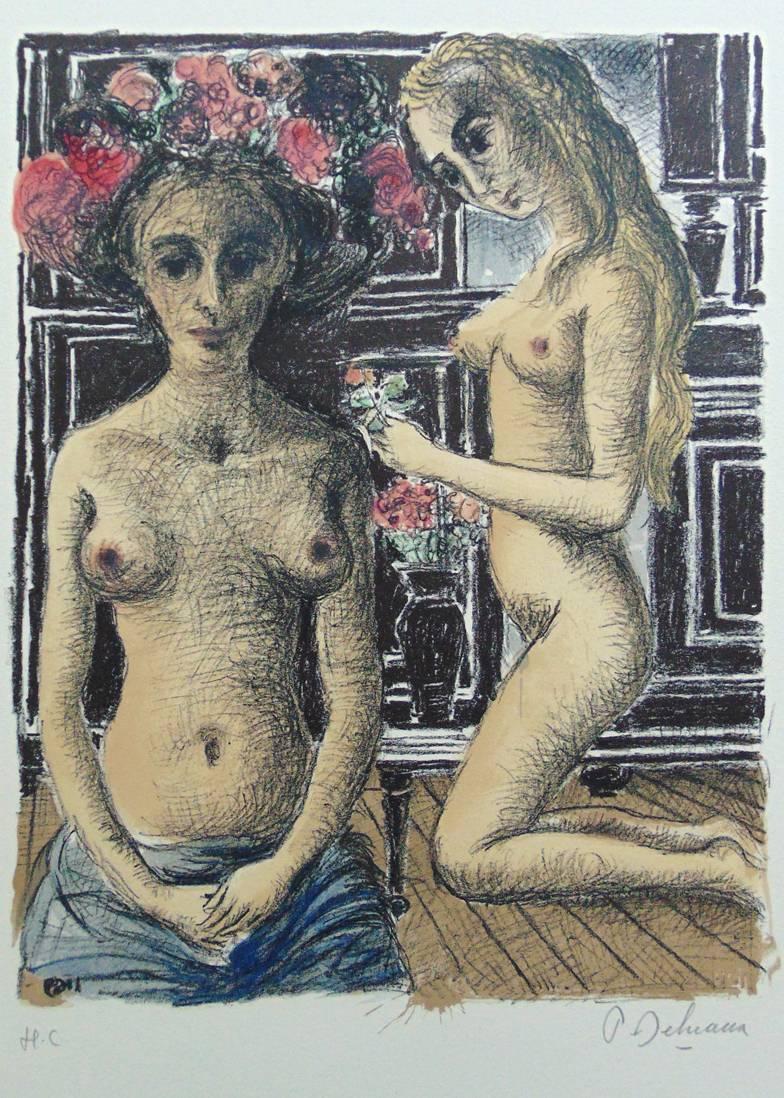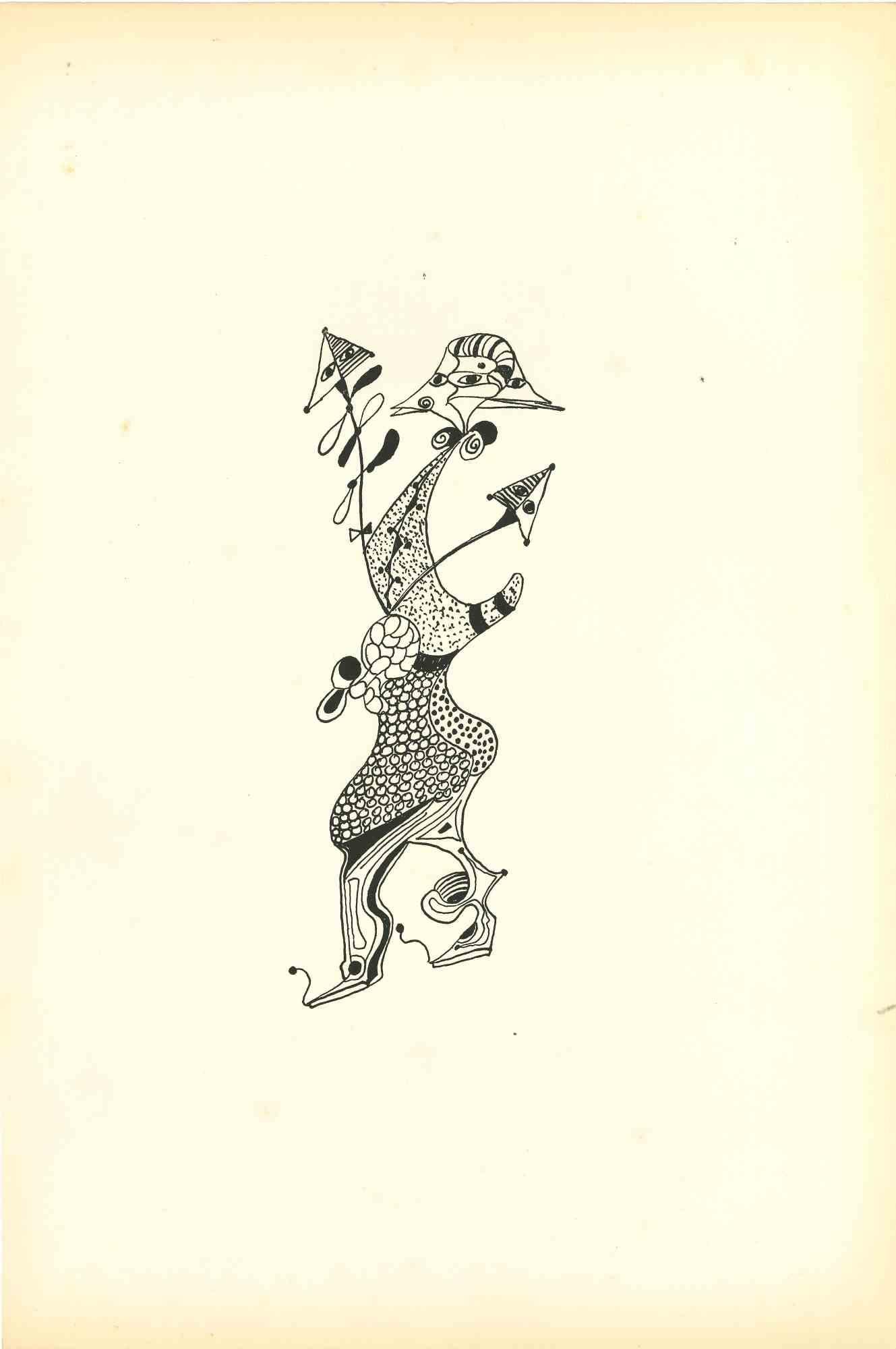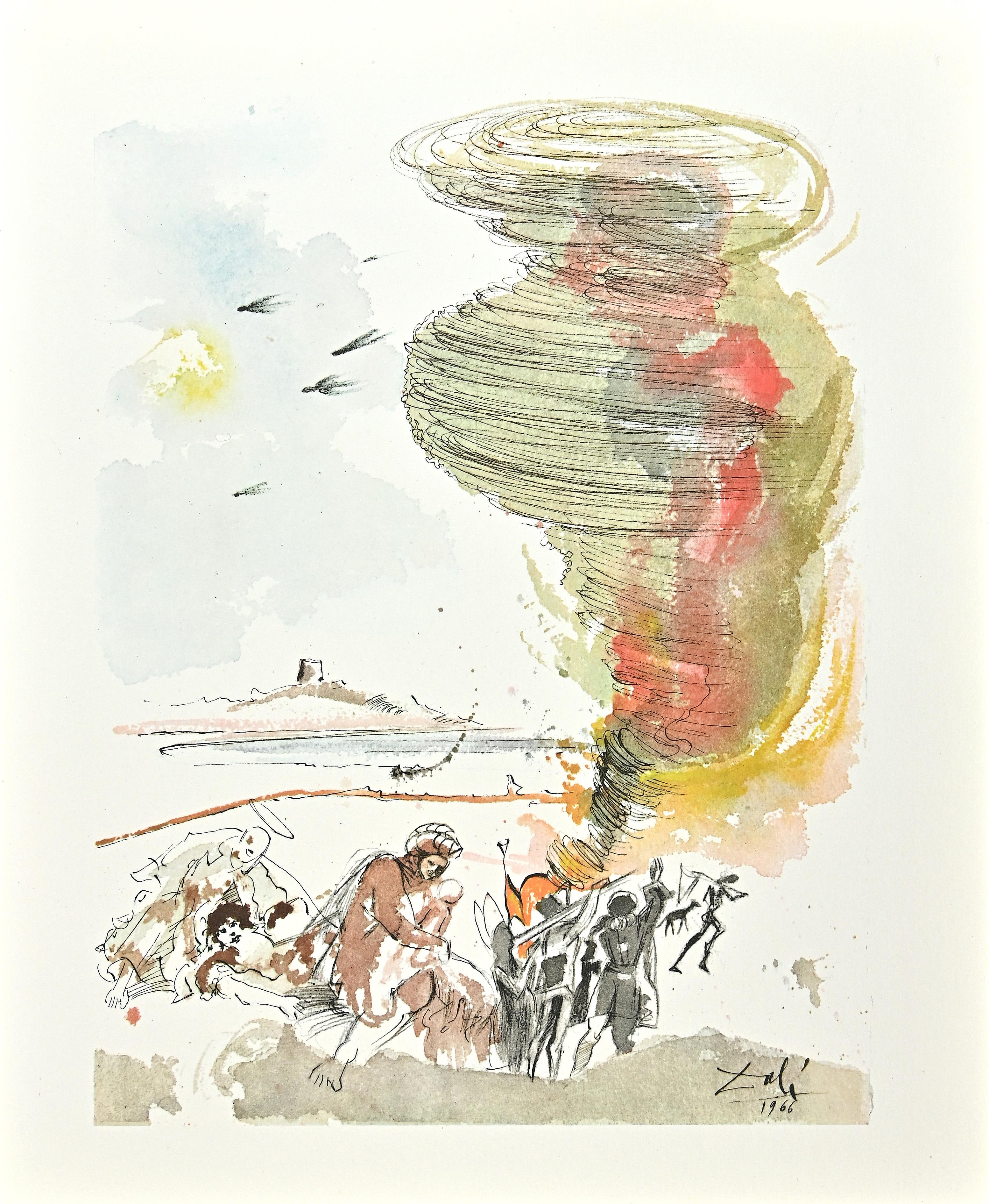Marc Chagall20th century color lithograph nude figures1960
1960
About the Item
- Creator:Marc Chagall (1887 - 1985, French)
- Creation Year:1960
- Dimensions:Height: 25.5 in (64.77 cm)Width: 21.5 in (54.61 cm)
- Medium:
- Movement & Style:
- Period:
- Condition:
- Gallery Location:Milwaukee, WI
- Reference Number:
Marc Chagall
Described by art critic Robert Hughes as "the quintessential Jewish artist of the twentieth century," the Russian-French modernist Marc Chagall worked in nearly every artistic medium. Influenced by Symbolism, Fauvism, Cubism and Surrealism, he developed his own distinctive style, combining avant-garde techniques and motifs with elements drawn from Eastern European Jewish folk art.
Born Moishe Segal in 1887, in Belarus (then part of the Russian empire), Chagall is often celebrated for his figurative paintings, but he also produced stained-glass windows for the cathedrals of Reims and Metz, in France; for the United Nations, in New York; and for the Hadassah Hospital in Jerusalem, as well as book illustrations, stage sets, ceramics, tapestries and fine-art prints. Characterized by a bold color palette and whimsical imagery, his works are often narrative, depicting small-village scenes and quotidian moments of peasant life, as in his late painting The Flight into Egypt from 1980.
Before World War I, Chagall traveled between St. Petersburg, Paris and Berlin. When the conflict broke out, he returned to Soviet-occupied Belarus, where he founded the Vitebsk Arts College before leaving again for Paris in 1922. He fled to the United States during World War II but in 1947 returned to France, where he spent the rest of his life. His peripatetic career left its mark on his style, which was distinctly international, incorporating elements from each of the cultures he experienced.
Marc Chagall remains one of the past century’s most respected talents — find his art on 1stDibs.
- ShippingRetrieving quote...Ships From: Milwaukee, WI
- Return PolicyA return for this item may be initiated within 14 days of delivery.
- "Sculptural Objects, " Original Color Lithograph signed by Henry MooreBy Henry MooreLocated in Milwaukee, WI"Sculptural Objects" is an original color lithograph by Henry Moore. The artist signed the piece lower right. This is from an edition of 3,000. It features abstract, biomorphic figur...Category
1940s Surrealist Abstract Prints
MaterialsLithograph
- "La Naissance D'Eve" from "Je Reve, " Color Lithograph signed by Andre MassonBy André MassonLocated in Milwaukee, WI"La Naissance D'Eve" is an original color lithograph by Andre Masson. This piece, depicting Adam and Eve, is from Masson's "Je Reve (I Dream)" portfolio, and is signed in pencil lowe...Category
1970s Surrealist Figurative Prints
MaterialsLithograph
- "La Naissance D'Eve, " Surreal Lithograph from "Je Reve" signed by Andre MassonBy André MassonLocated in Milwaukee, WI"La Naissance D'Eve" is an original color lithograph from the "Je Reve (I Dream)" portfolio by Andre Masson. The artist signed the piece lower right in pencil and wrote the edition n...Category
1970s Surrealist Figurative Prints
MaterialsLithograph
- "La Page Blanche (The White Page)" lithograph after painting by Rene MagritteBy René MagritteLocated in Milwaukee, WI"La Page Blanche," or in English "The White Page," is an original color lithograph executed after the original painting from 1967 by the Belgian Surrealist...Category
2010s Surrealist Figurative Prints
MaterialsLithograph
- "A Multiple of Gaudy and Fantastic Appearances from Edgar Allen Poe..."By Federico CastellonLocated in Milwaukee, WI"A Multiple of Gaudy and Fantastic Appearances" from "Edgar Allen Poe's Mask of the Read Death" is an original lithograph by Frederico Castellon. The artist ...Category
1960s Surrealist Figurative Prints
MaterialsLithograph
- "Vanity Fair (The Face Off) Recto, Camel Cigarette Verso, " by Paolo GarrettoBy Paolo GarrettoLocated in Milwaukee, WIThis double-sided lithograph by Paolo Garretto features a Vanity Fair cover "The Face Off" on the front and a Camel Cigarette ad on the back. It was pu...Category
1930s Surrealist Figurative Prints
MaterialsLithograph
- HAMLET SUITEBy Salvador DalíLocated in Aventura, FLThis rare 10 piece series from 1973 is Dali's interpretation of Shakespeare's drama Hamlet. Dali paid homage to Shakespeare in several other works but this suite is considered to be ...Category
1970s Surrealist Figurative Prints
MaterialsLithograph, Engraving, Aquatint, Paper
- The Siren La SirèneBy Paul DelvauxLocated in London, GBPAUL DELVAUX 1897-1995 Antheit, Huy 1897-1995 Veurne (Belgian) Title: The Siren La Sirène, 1969 Technique: Original Hand Signed and Inscribed Lithograph in Colours on Arche...Category
1960s Surrealist Figurative Prints
MaterialsLithograph
- PhyrnéBy Paul DelvauxLocated in London, GBPAUL DELVAUX 1897-1995 Antheit, Huy 1897-1995 Veurne (Belgian) Title: Phyrné, 1969 Technique: Original Hand Signed and Inscribed Lithograph in Colours on Arches Wove Paper ...Category
1960s Surrealist Figurative Prints
MaterialsLithograph
- Ponte Corvo Black & White SurrealistLocated in Eversholt, BedfordshirePrint Ponte Corvo black and white limited edition no2 of 50 In a moulded gilded frame length 91cm, height 75cm, depth 4cm Framers label on reverse L'Ariete Galleria Torino just pur...Category
1960s Surrealist Figurative Prints
MaterialsLithograph
- Composition Of Diodora - Original Lithograph by Bruno Capacci - 1950Located in Roma, ITComposition Of Diodora is an original lithograph realized by Bruno Capacci in 1950. The artwork is part of an edition in 500 pieces by "La nef d'argent" Paris. In good condition, n...Category
1950s Surrealist Figurative Prints
MaterialsLithograph
- Sed Libera Nos a Malo - Lithograph attr. to Salvador Dalí - 1966By Salvador DalíLocated in Roma, ITSed Libera Nos a Malo is a lithograph from the suite "Pater Noster", published by Rizzoli Editore, Milan, 1966. Signed and dated "1966" in plate on the lower right margin. In excellent conditions. Reference: R. Michel, L. W. Löpsinger, Dalì, Catalogue Raisonné of Prints II, Lithographs and Wood engravings, 1956-1980, p. 180, n. 1599. Pater Noster is a beautiful artists' book illustrated by the oldest and mystic Salvador Dalí. Nine colored plates protected by Japanese paper represent the verses of the Lord's Prayer. The pages of a 14th-century missal reproduce a Pater Noster in Gregorian chant...Category
1960s Surrealist Figurative Prints
MaterialsLithograph
